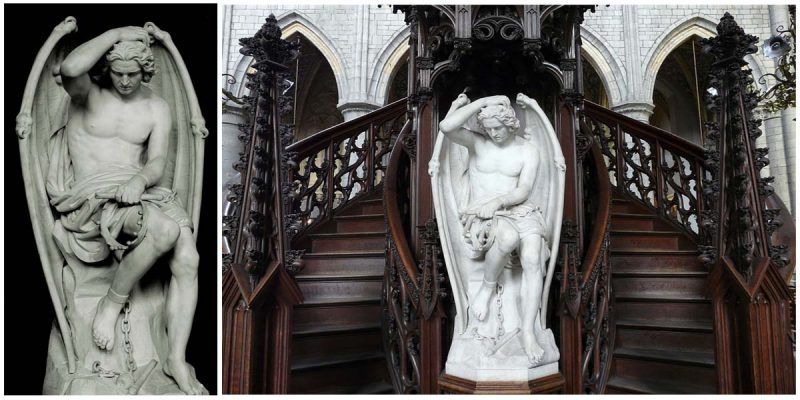Le génie du mal or The Genius of Evil, in English known as Lucifer of The Lucifer of Liége’ is a magnificent sculpture executed in white marble by the Belgian artist Guillaume Geefs installed in St. Paul’s Cathedral in 1848. Francophone art historians most often refer to the sculpture as the fallen angel.
It depicts a beautiful young man, chained, seated, and nearly nude only with drapery gathered over his thighs and bat wings.

With this sculpture, Geefs replaced an earlier sculpture of his brother Joseph Geefs, L’ange du mal, which was removed from the cathedral because of its distracting allure and “unhealthy beauty”. L’ange du mal is among six statues featured in a painting by Pierre Langlet, The Sculpture Hall of the Brussels Museum, along with Love and Malice by Jean, another of the six Geefs sculptor-brothers. Despite the controversy, Joseph’s work was admired by the highest social scale.

Guillaume Geefs sought to address specific criticism leveled at his brother Joseph’s work. Guillaume’s sculpture shows less flesh and it’s marked more strongly by satanic iconography as neither human nor angelic.
Le genie du mal is gazing away from his body, and his Lucifer’s knees are drawn together protectively. The uplifted right arm allows the artist to explore the patterned tensions of the serratus anterior muscles, and the gesture and the angle of the head suggest that the genie is warding off “divine chastisement.”
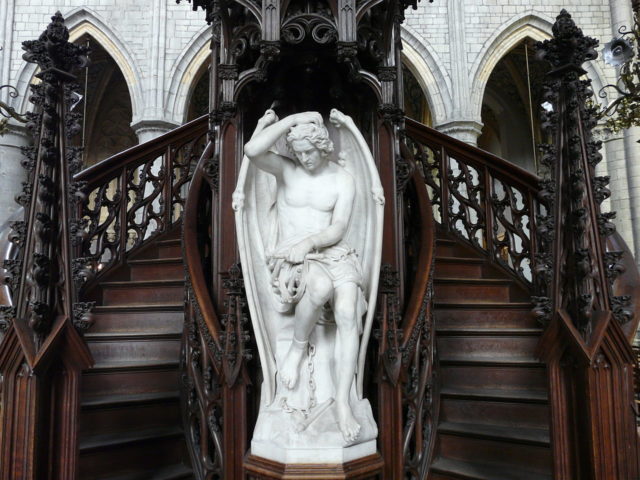
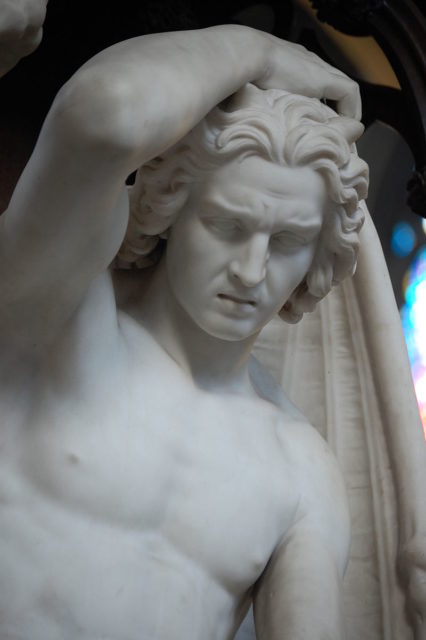
Guillaume added several details to enhance the Luciferian iconography and the theme of punishment. There is an apple with bite marks at the angel’s feet representing the “forbidden fruit”, along with the broken-off tip of the scepter, the stellar final which marks Lucifer as the Morning Star of a classical tradition. The horns may be intended to further dehumanize the figure.
They are animalistic markers of the satanic or demonic, but in a parallel tradition of religious iconography, horns represent points of light. The suffering face of the sculpture has been read as expressing remorse and despair with a tear slipping from Lucifer’s left eye.
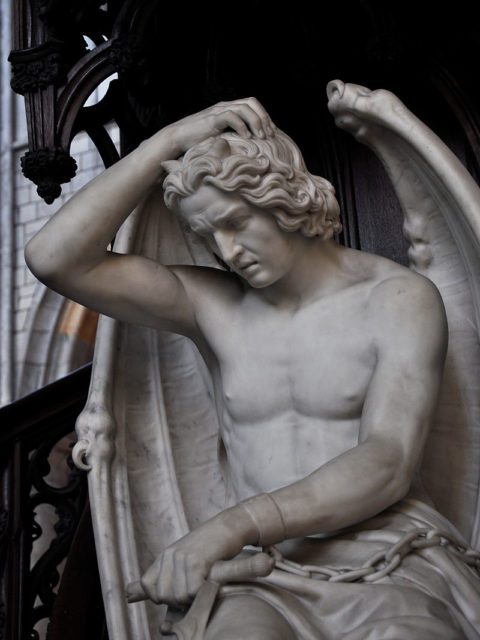
The sculpture is in bondage, with its right ankle and left wrist chained. In the 19th century, Lucifer was often cast as a Promethean figure. The same Prometheus who is an analogy of the crucified Christ. In A. H. Krappe’s folkloric typology, Lucifer conforms to a type that includes Prometheus and the Germanic Loki.
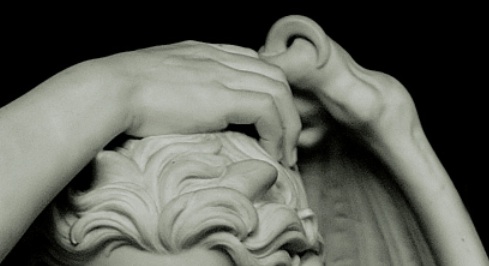
In 1986, the Belgian artist Jacques Charlier made an installation called The Road to Paradise in which Le genie du mal was a focal point.
Read another story from us: The chilling legend of the Jersey Devil
The German title Himmelsweg refers to the Nazi euphemism or “cold joke” for the access ramp that led to the gas chambers. The sculpture sometimes appears on blogs, Internet forums and websites that are devoted to alternative religious practices such as Satanism and Luciferianism.
